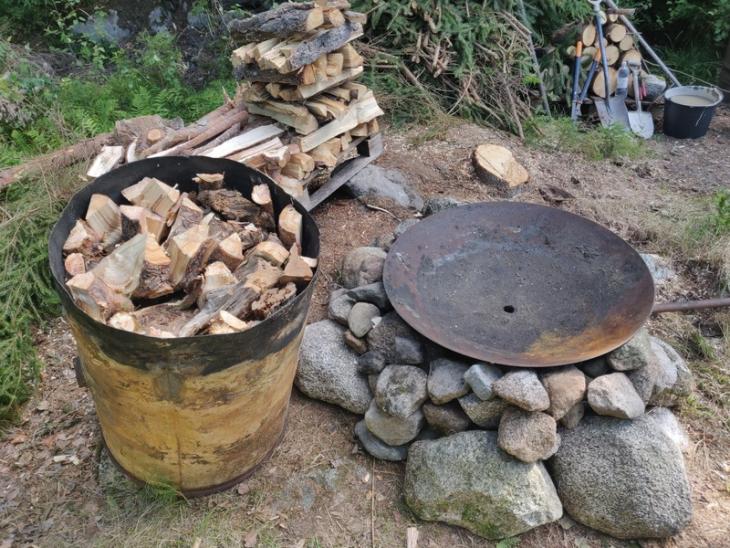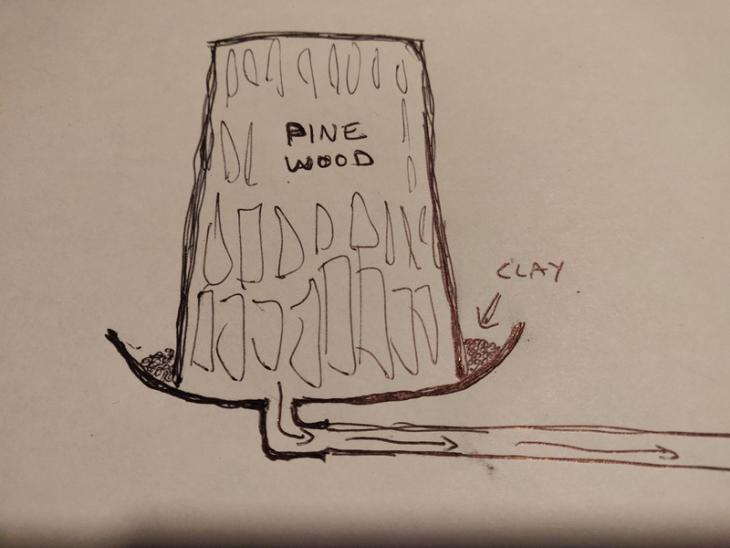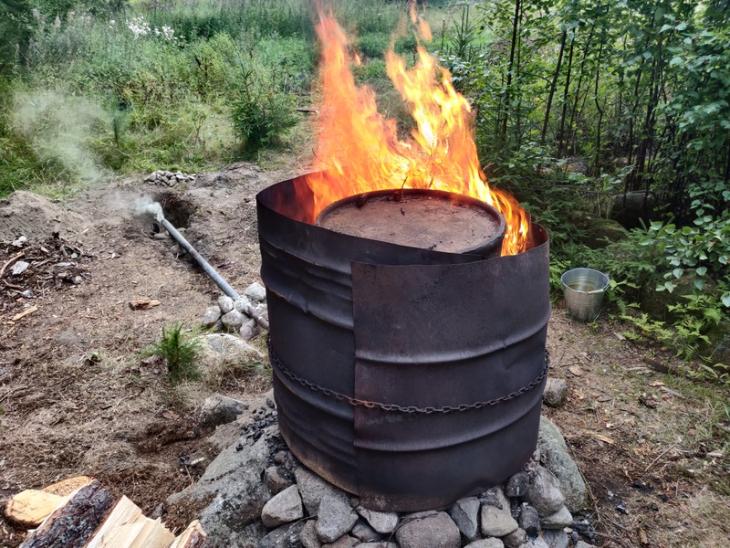
Pine tar
This summer I've allowed myself some time away from the coding, just to get some practical work done properly. And thinking of the tasks that I need to get done before the next winter, I realized I'd need some pine tar. Since pine tar is rot resistant, it has been traditionally used to treat pieces of wood which are exposed to the weather. Some 20 years ago one of the elder neighbours gave me a few pieces of equipment to construct a simple kiln for extracting tar. And it must be more than 15 years since I last used the equipment - a parabolic steel plate with a hole in the middle, some metal pipes, and an empty barrel.
One of the pine trees growing on my yard had been slowly drying and dying. And when that happens, a pine tree generates more and more sap - which I suppose is to fight pests, helping the tree live longer. But such a tree is also good for making tar. So I cut down the tree and chopped it to smaller pieces. Also, some years ago one of my neighbours borrowed the tar kiln equipment - and after he got enough tar for his own needs, he had some surplus of tarry tree stumps he had been collecting. He said I can use them.
I started by finding a good spot for the kiln, placing the parabola so that it sits firmly on top of stones, and the extraction pipe running gently downhill. I then loaded the barrel with pine wood - turned out that I had more than enough for one barrel, so I probably need to repeat the procedure later on, some other week. Well, but the basic idea is to place split pieces of timber standing in upright position inside the barrel. And the last round of timber needs to be filled so tightly that they won't fall down when the barrel is turned the other way around. Then, the barrel loaded with wood is placed on the parabola, the open side facing down. The seams of the barrel and parabola get sealed with a layer of wet clay. So that once there is fire going on outside the barrel, no flames will get inside the barrel. So the wood in the barrel will just heat up, without actually burning. Hot tar will run downwards, eventually finding it's way out through the hole in middle of the parabola, running through a pipe, slightly cooling down, finally ending up in a container.
To make the process a bit more efficient, there is another layer of steel around the barrel, leaving some 20cm of space around the barrel. So, fire is burnt in that 20cm space, and the surrounding layer of steel reduces the loss of radiated heat. And, the kiln is more comfortable to operate when the flames are contained. The fire anyway needs to be constantly fed, which involves a lot of moving around and near the fire. I started the fire, and after some 15 minutes there was thin white smoke coming out from the extraction pipe. And soon after that, first drops of tarry liquid. That is not yet proper thick tar - I don't know a correct term in English, but in Finnish that liquid is called "tervan kusi" - literally "piss of the tar". One use for it is in sauna; you pour a little of it to water, and then cast water onto the sauna stove stones; that gives aromatic steam.
And then it was proper tar; thick and black. Some of my neighbours visited, just to watch the process, and to have a little chat. One of them brought some dinner, which was nice, as I didn't have too much time to go prepare a meal for myself. Hehe, actually - I forgot to do any preparations for taking care of my own nutrition. But I had prepared to stay hydrated, and I had bought some sangria. A mug of sangria with ice cubes, that was heavenly on a warm summer day while working next to burning flames!
After six hours of feeding the fire there was no more smoke nor tar coming from the pipe. So I let the fire go out. I haven't measured exactly, but I'd estimate the barrel produced about 5 litres of tar, plus a litre of that less thick tarry liquid. And almost a full barrel of charcoal. I've been using the charcoal when cooking coffee and food outdoors.




Comments
Erkka, I love reading your blog posts! Please keep us updated!
Inspiring stuff for someone living in a city and imagining such a life!
Very nice and useful, thank you for sharing the process!
Hienoa!
Pages
Add new comment